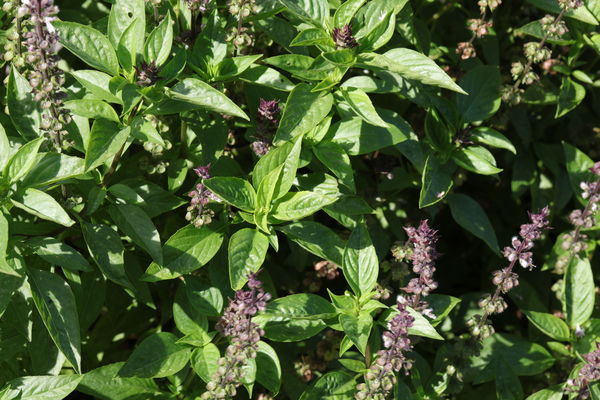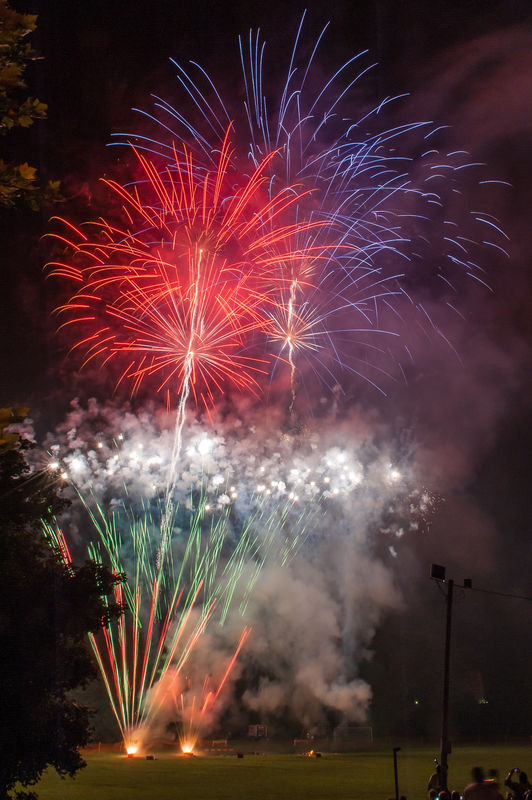Sunny 16
Jun 28, 2018 10:32:45 #
The Sunny 16 rule doesn't seem to be working. The attached photo was taken in full sun. The Canon 5d Mark IV evaluative metering came up with f/16, ISO 200, 1/60s, which is a good exposure. Should have been f/16, ISO 100, 1/125s using the Sunny 16 rule. What really got me thinking about it was a photo of a flower taken in shade with full sun around. I wanted everything in focus so I used f/32, and the wind was blowing so I used 1/125s, and the ISO came out to 12800, which is not good.


Jun 28, 2018 10:41:40 #
joderale wrote:
The Sunny 16 rule doesn't seem to be working. The attached photo was taken in full sun. The Canon 5d Mark IV evaluative metering came up with f/16, ISO 200, 1/60s, which is a good exposure. Should have been f/16, ISO 100, 1/125s using the Sunny 16 rule. What really got me thinking about it was a photo of a flower taken in shade with full sun around. I wanted everything in focus so I used f/32, and the wind was blowing so I used 1/125s, and the ISO came out to 12800, which is not good.
The sunny 16 rule is based on incident, not reflected light readings. Metering the light source itself with an ExpoDisc over your lens (or with a hand-held incident light meter calibrated to YOUR camera) would be more accurate than any in-camera meter, most of the time.
Unless you’re working with negative films or raw files, metering the *light falling on* the subject, rather than the light reflected from the subject itself, is the better approach.
You can simulate an incident reading by placing a photographic gray card (18% reflectance) in the same light as your subject, and reading that, taking care to not shadow the card or capture glare from it.
Jun 28, 2018 10:45:46 #
It's more of a guide, and sketchy at best.
--Bob
--Bob
joderale wrote:
The Sunny 16 rule doesn't seem to be working. The attached photo was taken in full sun. The Canon 5d Mark IV evaluative metering came up with f/16, ISO 200, 1/60s, which is a good exposure. Should have been f/16, ISO 100, 1/125s using the Sunny 16 rule. What really got me thinking about it was a photo of a flower taken in shade with full sun around. I wanted everything in focus so I used f/32, and the wind was blowing so I used 1/125s, and the ISO came out to 12800, which is not good.
Jun 28, 2018 11:13:25 #
Your camera's meter is dumb. It can do a simple thing; calculate an exposure based on what's in the field of view. It can be fooled easily. The poster that talked about incident metering was spot on. Sunny 16 is for use when NOT metering.
The sunny 16 rule works fine IF you know how to employ it. You set your camera for the LIGHT FALLING ON THE SUBJECT OF INTEREST.
If the leaves are in sunlight and that's what you want properly exposed...then expose that way...if your plant is in shade, then the sunlight isn't falling on the plant is it? You can't use the sunny 16 there, you have to open up to compensate.
The sunny 16 rule works fine IF you know how to employ it. You set your camera for the LIGHT FALLING ON THE SUBJECT OF INTEREST.
If the leaves are in sunlight and that's what you want properly exposed...then expose that way...if your plant is in shade, then the sunlight isn't falling on the plant is it? You can't use the sunny 16 there, you have to open up to compensate.
Jun 28, 2018 11:47:30 #
One side note: f/32 was probably not needed (and often not desired due to diffraction). Plug your camera, focal length and distance to subject in this calculator and see what results:
http://www.dofmaster.com/dofjs.html
Diffraction:
https://www.bhphotovideo.com/explora/photography/tips-and-solutions/lens-diffraction-what-it-and-how-avoid-it
-
http://www.dofmaster.com/dofjs.html
Diffraction:
https://www.bhphotovideo.com/explora/photography/tips-and-solutions/lens-diffraction-what-it-and-how-avoid-it
-
Jun 28, 2018 11:49:44 #
burkphoto wrote:
The sunny 16 rule is based on incident, not reflec... (show quote)
Bill, actually the Sunny 16 rule is based on a standard EV of 15 for full midday sun with clear or light haze. With a good working knowledge of the zone system, using reflected light, it is possible to be more accurate than incident, particularly with overly bright or dark subjects, or when the contrast range is wide.
There are plenty of situations were it is completely impractical to use incident or a gray card, or even an Expodisc. You are at a baseball game and you are in shade in the grandstand, and the players are in full sunlight. You are at a stage production or a concert, sitting in the audience, and lighting is constantly changing. You are in a blind shooting birds and the birds are not only flying around, but perching in the shade of trees, or out in the open. Taking a sunset or sunrise. Fireworks. In all of these situations, both the incident meter and gray card would be totally useless.
As you know, being versatile is a hallmark of a good photographer, and being able to use all sorts of tools to establish good exposure - EV chart, incident meter, spot meter, gray card or hand for reflected readings, Expodisc, seat-of-pants, etc - and know when to use which method(s) is a good thing.
Jun 28, 2018 12:25:12 #
joderale wrote:
The Sunny 16 rule doesn't seem to be working. The attached photo was taken in full sun. The Canon 5d Mark IV evaluative metering came up with f/16, ISO 200, 1/60s, which is a good exposure. Should have been f/16, ISO 100, 1/125s using the Sunny 16 rule. What really got me thinking about it was a photo of a flower taken in shade with full sun around. I wanted everything in focus so I used f/32, and the wind was blowing so I used 1/125s, and the ISO came out to 12800, which is not good.
Yes, the sunny 16 rule does always works, because it is a constant!
Jun 28, 2018 13:26:44 #
Jun 28, 2018 15:12:25 #
joderale wrote:
The Sunny 16 rule doesn't seem to be working. The attached photo was taken in full sun. The Canon 5d Mark IV evaluative metering came up with f/16, ISO 200, 1/60s, which is a good exposure. ...
Why would you assume that the camera came up with a good exposure? According to Sunny 16, the camera overexposed by nearly 2 stops. It looks like the camera is reacting to a scene that happens to have predominantly dark objects - no whites, hardly anything brighter than the middle gray leaves other than a few tiny highlights that are far outweighed by the deep dark shadows.
I can't speak for Canon digital but every other camera I have used, digital and film, produces good broad daylight images based on Sunny 16. Dark objects come out dark and light objects come out bright. Best of all, very light objects like egret feathers and foam on surf come out bright without having blown highlights .
You might find Manual Exposure without a Meter helpful.
Jun 28, 2018 15:15:52 #
speters wrote:
Yes, the sunny 16 rule does always works, because it is a constant!
Exactly!
That is because the brightness of the sun in broad daylight is a constant and so are the reflective properties of all natural objects.
Jun 28, 2018 15:20:19 #
Gene51 wrote:
Bill, actually the Sunny 16 rule is based on a sta... (show quote)
All true, all good, but a bit advanced for some.
Under many circumstances, the Zone system is about the only thing that works. However, 95% of photography students’ eyes glaze over when they first encounter it. One must be committed...
For fireworks, turn the ISO into an aperture at 1/10 the value (ISO 100 at f/10; ISO 64 at f/6.3...). Bracket from there, chimping as you work.
Jun 28, 2018 15:42:19 #
burkphoto wrote:
All true, all good, but a bit advanced for some. ...
Sunny 16 is advanced?

It's probably the easiest concept for a beginner to grasp since it relates all three parts of the "exposure triangle."
And it begs the immediate question, "What if I don't use f/16?" Once that is explained, the beginner is no longer a beginner.
Jun 28, 2018 15:48:54 #
selmslie wrote:
Sunny 16 is advanced? 
It's probably the easiest concept for a beginner to grasp since it relates all three parts of the "exposure triangle."
And it begs the immediate question, "What if I don't use f/16?" Once that is explained, the beginner is no longer a beginner.

It's probably the easiest concept for a beginner to grasp since it relates all three parts of the "exposure triangle."
And it begs the immediate question, "What if I don't use f/16?" Once that is explained, the beginner is no longer a beginner.
I think Bill was referring to the zone system.
Jun 28, 2018 15:52:50 #
burkphoto wrote:
All true, all good, but a bit advanced for some.
Under many circumstances, the Zone system is about the only thing that works. However, 95% of photography studentsâ eyes glaze over when they first encounter it. One must be committed...
For fireworks, turn the ISO into an aperture at 1/10 the value (ISO 100 at f/10; ISO 64 at f/6.3...). Bracket from there, chimping as you work.
Under many circumstances, the Zone system is about the only thing that works. However, 95% of photography studentsâ eyes glaze over when they first encounter it. One must be committed...
For fireworks, turn the ISO into an aperture at 1/10 the value (ISO 100 at f/10; ISO 64 at f/6.3...). Bracket from there, chimping as you work.
I've gotten great results just taking a 3-5 second exposure and adjusting aperture to around F5.6 and the ISO to allow decent color in the bursts. It usually takes me a couple of shots, but once I have it dialed in it's good for the rest of the show. The formulas and guides don't really work for me - since the firework is a light source, the further away you are from it the lower the value of the light, and vice versa. Shooting raw allows for more exposure latitude than jpegs.
Jun 28, 2018 16:33:55 #
Here’s my burning Sunny 16 question?
What’s the Sunny rule if you’re shooting on the SUN??? LoL
SS
What’s the Sunny rule if you’re shooting on the SUN??? LoL
SS
If you want to reply, then register here. Registration is free and your account is created instantly, so you can post right away.










